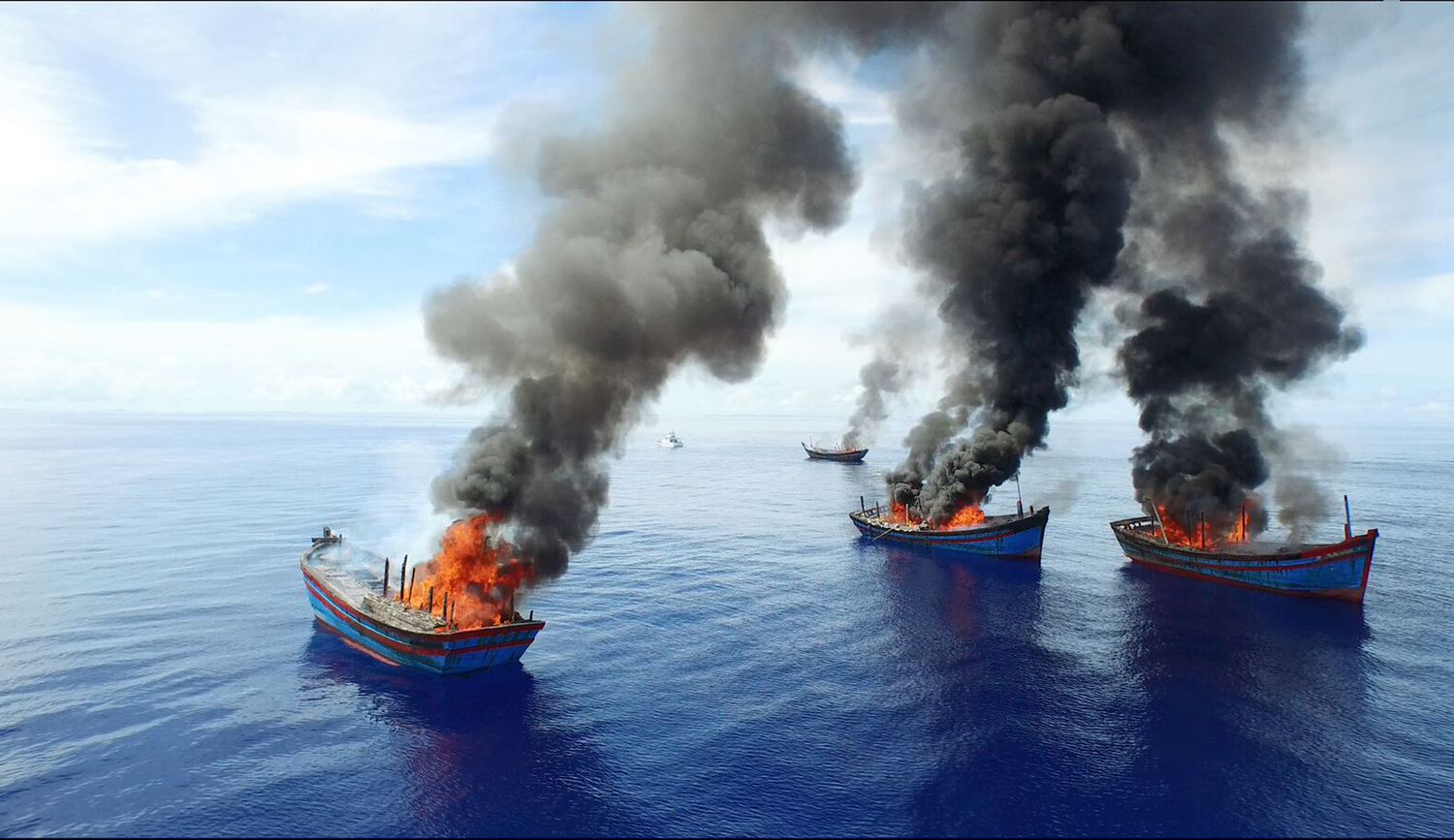Has illegal, unreported and unregulated fishing met its match in Big Data?
So-called IUU fishing thwarts marine restoration initiatives, degrades natural resources, abets human rights violations and leaks billions of dollars from the global economy. Pirate fishers have largely acted fearlessly because there was no way to track them or enforce law in remote, international waters.
 But change is coming into focus with Eyes on the Sea, a data aggregation and visualization platform to help authorities monitor, detect, and respond to illicit fishing activity across the world’s oceans. A project of the Pew Charitable Trust, Eyes on the Sea, was developed in partnership with Satellite Applications Catapult, a U.K. government initiative to foster economic growth via space technology.
But change is coming into focus with Eyes on the Sea, a data aggregation and visualization platform to help authorities monitor, detect, and respond to illicit fishing activity across the world’s oceans. A project of the Pew Charitable Trust, Eyes on the Sea, was developed in partnership with Satellite Applications Catapult, a U.K. government initiative to foster economic growth via space technology.
The goal of a transparent, accessible and accountable ocean economy has eluded regulators for decades. Pirate ships can offload their illegal catch, fabricate ledgers, or simply evade monitoring altogether. As The New York Times reported in its Outlaw Ocean series, even murder can go unpunished on the high seas. What hope is there for fish?
Four Vietnamese fishing boat captains got a preview of the future in June, when Pew provided data to the government of Palau that four “blue boats” were fishing illegally in the island nation’s waters. Palau officials emptied the boats of crewmen, sent them home and unloaded a 17,000-pound haul including protected sea turtle, sea cucumber, and reef fish species. Finally, the boats were set on fire.
“We will not tolerate poachers in our ocean,” said Palau’s president, Tommy Remengesau.
Command central in the new battle against IUU is the Virtual Watch Room, where team members monitor fishing activities, especially in restricted areas and reports on violators. Data scientists have developed algorithms which splice together vessel identification, ocean topography, and satellite images to produce a refreshingly clear picture of what ships are up to at sea.
 Resembling NASA’s Mission Control Center, the Virtual Watch Room houses analysts able to identify the ‘body language’ of vessels by tracking and plotting their sailing patterns. Fish congregate predictably around particular underwater topography like ridges or reefs. Given the data tools to visualize this behavior, it’s not difficult for a fisheries analyst to identify illegal activity.
Resembling NASA’s Mission Control Center, the Virtual Watch Room houses analysts able to identify the ‘body language’ of vessels by tracking and plotting their sailing patterns. Fish congregate predictably around particular underwater topography like ridges or reefs. Given the data tools to visualize this behavior, it’s not difficult for a fisheries analyst to identify illegal activity.
The Pew team says the application of Virtual Watch Room data goes beyond IUU fishing. Some ideas include: better tracking and managing of harbor traffic and new financing and insurance modeling. And if bad fishers can be punished with this data, might there also be room for good fishers to be incentivized and rewarded?
One investor working with this same logic is Schmidt Marine Technology Partners, a program under the Schmidt Family Foundation. The fund, which can provide both venture capital investment and philanthropic support, aims to help fledgling ocean entrepreneurs demonstrate commercial solutions in robotics, sensors and cameras and other sectors.
Other satellite-based surveillance efforts, such Global Fishing Watch, a partnership between Oceana, SkyTruth and Google, aim to build citizen awareness and engagement.
Pew aims to make its data robust enough to be used to enforce illegal activity. Following the enforcement action in Palau and other early successes, Pew is working to add more layers of data to Eyes on the Sea – synthetic aperture radar, infrared spectroscopy, drone images and even crowd-sourced photographs from the public. Put together, this information represents a sea change for how we manage and govern the oceans.











